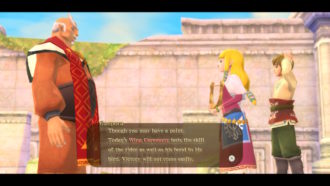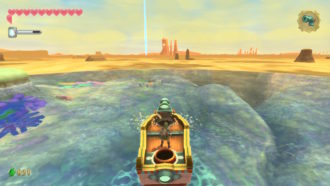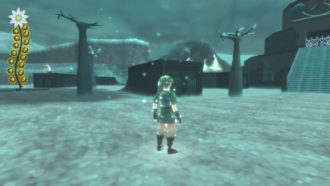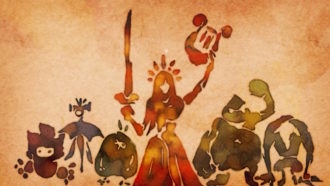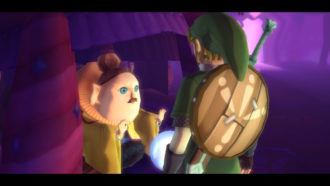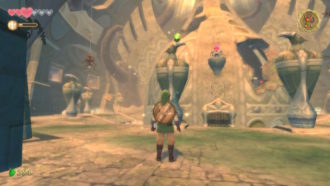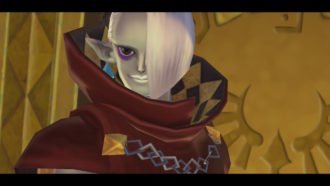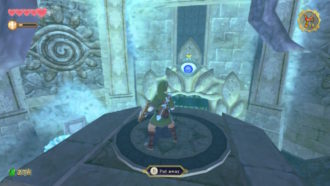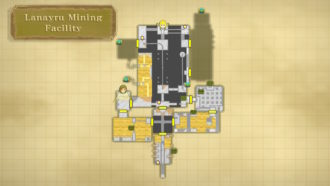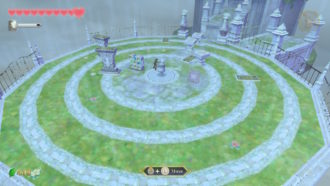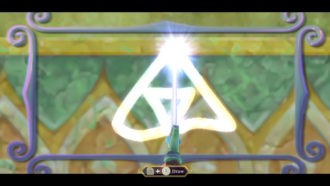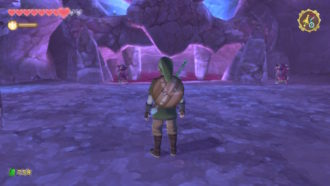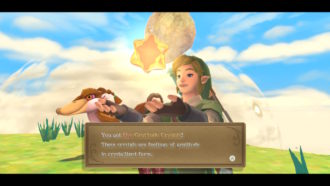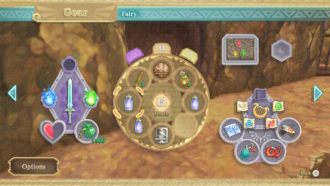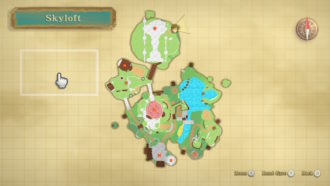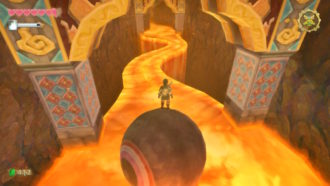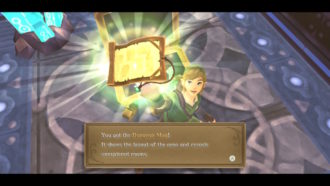Platform:
Nintendo Switch
Released:
July 16, 2021
Publisher:
Nintendo
Developer:
Nintendo
Warm up your sword arm and prepare for adventure in The Legend of Zelda: Skyward Sword HD for Nintendo Switch, a remaster of the 2011 title for the Wii. This is a traditional Zelda game through and through, complete with an overworld to explore, puzzles to solve, and dungeons to clear of nasty monsters and epic bosses.
The original Skyward Sword provided some twists and innovations on how traditional series mechanics could be implemented. It brought unique features such as one-to-one motion-controlled sword combat, stamina management, item durability, and weapon upgrading to the franchise for the first time. This remaster sees the title hit the Switch with a bunch of quality of life improvements and a fresh coat of paint. But in this post-Breath of the Wild world, is there still a place for a story about a boy, a girl, and a few big birds?
Linking to the Past
In Skyward Sword, Zelda is not a princess. Rather, she and Link are students at the Knight Academy on Skyloft, an island that floats high above the clouds. The pair are childhood friends, frequently flying around together on giant birds called Loftwings that ferry the citizens of Skyloft around the various small islands in the Sky. When a disastrous storm launches Zelda from her Loftwing and into the mysterious Surface below the clouds, Link is tasked with finding her by a spirit within a hidden magic sword. What follows is a tale of prophecy, destiny, and fate, with a personal touch: Link isn’t just questing to save the world, he’s in it to save his friend.
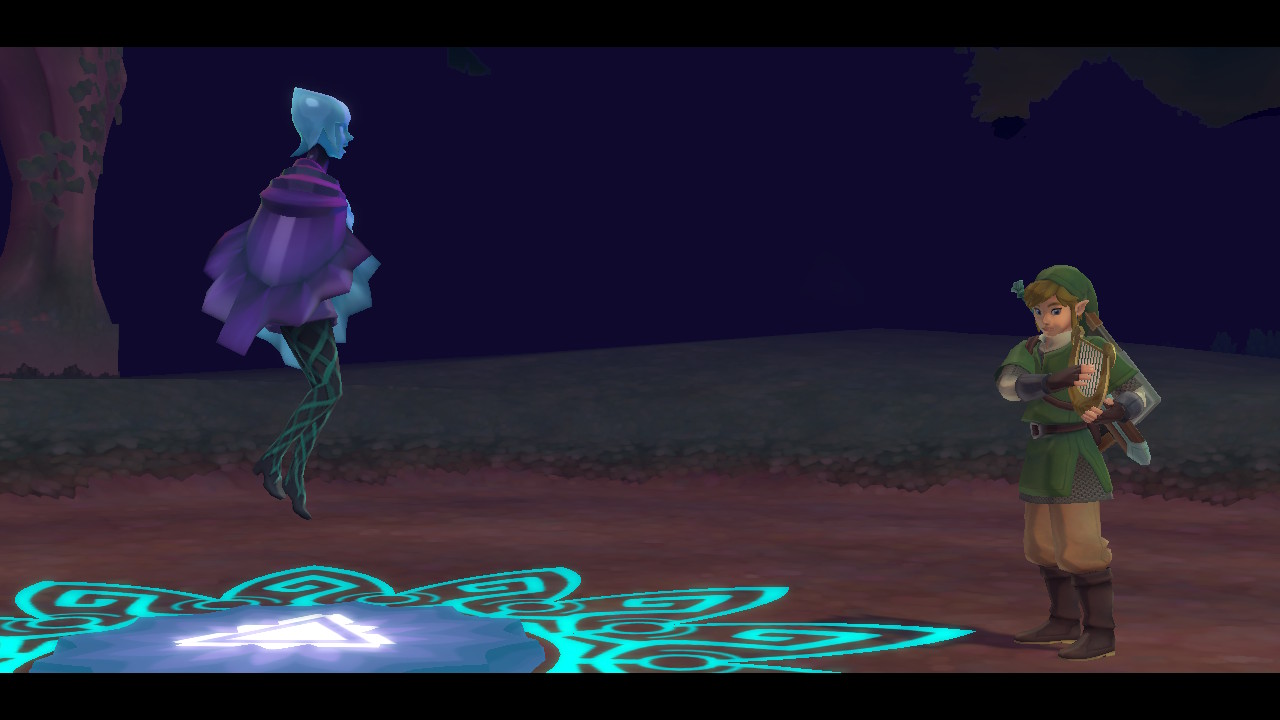
A polarising title among Zelda fans, Skyward Sword took on the task of explaining the origins of the franchise’s legendary Master Sword, as well as the eternal struggle between good and evil that echoes through every other title in the series. Releasing along with the lore collection Hyrule Historia in 2011, Skyward Sword serves as a prequel to the series, sitting at the very beginning of the infamous Zelda timeline and explaining the interplay between heroes, demons, and goddesses. It was also a showcase for the Wii Motion Plus accessory that had debuted so successfully with Wii Sports Resort, a celebration of the franchise’s 25th anniversary, and the first Zelda game with a fully orchestrated soundtrack (which came bundled on a CD with the Wii release). It’s worth noting right away that the score is absolutely sublime, with the epic Ballad of the Goddess acting as a beautiful motif throughout the entire game.
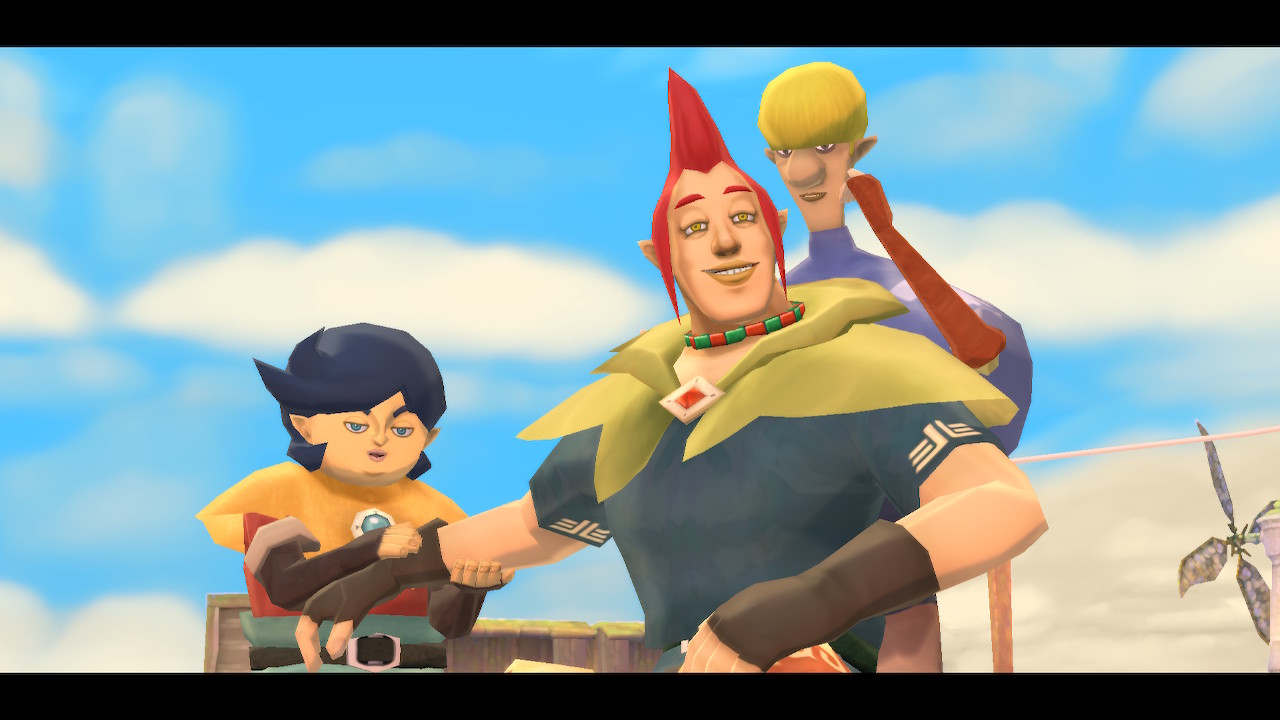
For a title that was designed with its narrative as the central focus, it’s not its strongest element at all. The holes in Skyward Sword’s plot have been picked at, discussed, and analysed at length by Zelda fans over the last decade. Its pace is erratic and relies heavily on ancient history and prophecies from the past: not an ideal basis for a game that’s meant to be the origin story of the franchise. However, it’s a serviceable enough story to facilitate an adventure, and there are some excellent characters who remain fan favourites years later. In particular, the quiff-haired Groose gets a decent amount of story time to develop as a person, while the fabulously creepy Demon Lord Ghirahim is an ever-present tongue-waggling spectre. It’s just a shame that the design philosophy of Skyward Sword was built around a narrative that doesn’t really do anything too exciting, and this is probably the reason why Nintendo began to pivot away from linear storytelling in the more open-ended Breath of the Wild.
“Master, your Wii Remote batteries are getting low.”
Skyward Sword has classically been plagued with complaints about numerous small, irritating design decisions that, when combined, made for a frustrating experience. This has even been acknowledged by Nintendo and, savvily, addressing these issues is their core aim with Skyward Sword HD – they even released a “Quality of Life Trailer” that highlights some of the changes.
Traditionally, the player’s companion Fi would interrupt gameplay very often to point out various things. Sometimes, this would be useful information about a quest. Usually, it would be incredibly banal information, such as informing the player that their controller’s battery was low or that they didn’t have much health left (which is already quite obvious from the massive throbbing heart indicators onscreen). Occasionally, and criminally in the eyes of Zelda fans, Fi would give away the solutions to puzzles before the player had time to examine them, leading to an infamous hatred of the sword-dwelling companion that eclipsed that of even the annoying “Hey! Listen!”-slinging Navi from Ocarina of Time.
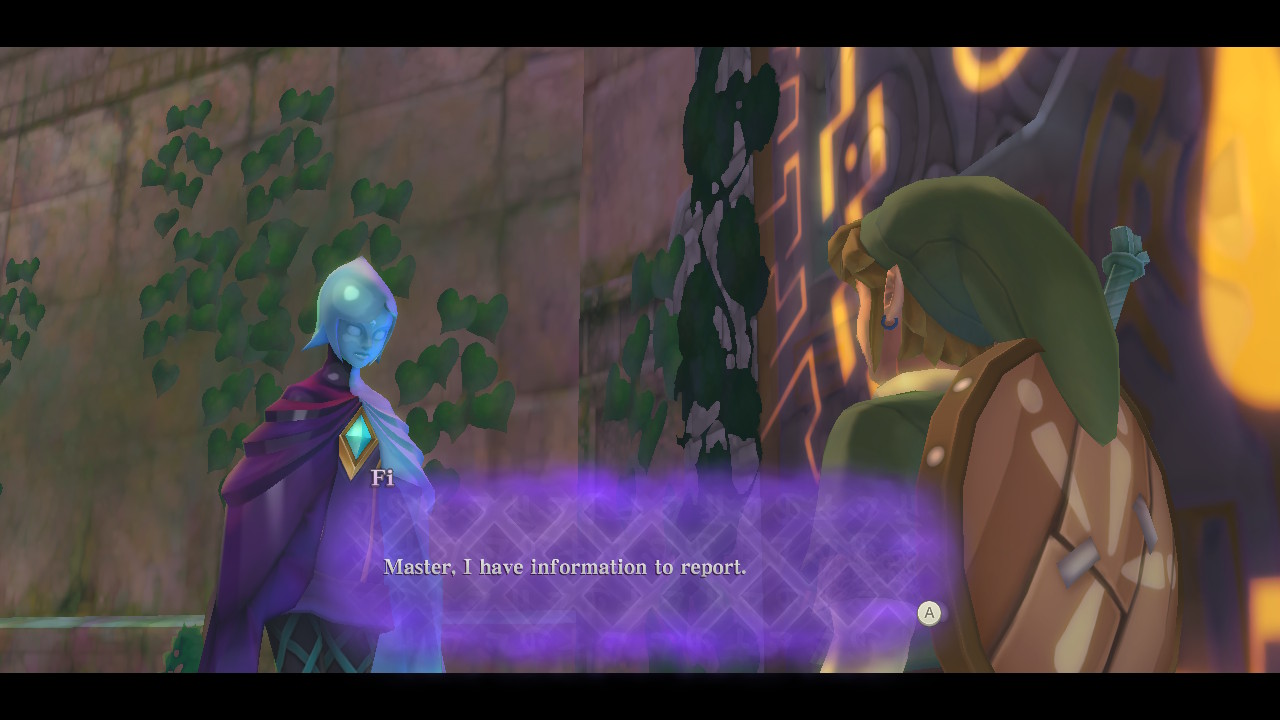
Fi haters will be pleased to know that her forced interactions have been well and truly toned down, with most of her advice remaining optional. New and inexperienced players can still call upon the blue spirit with the press of a button, a godsend with some of the more cerebral or obscure puzzle solutions. Other improvements have also been made, such as making large parts of the lengthy opening tutorial optional, adding the ability to skip cutscenes and fast-forward through (most) text, and a new autosave feature that is very appealing to handheld players. Players also now have full control over the camera with the right-stick, which, like most of these improvements, feel fairly standard and unsurprising for 2021.
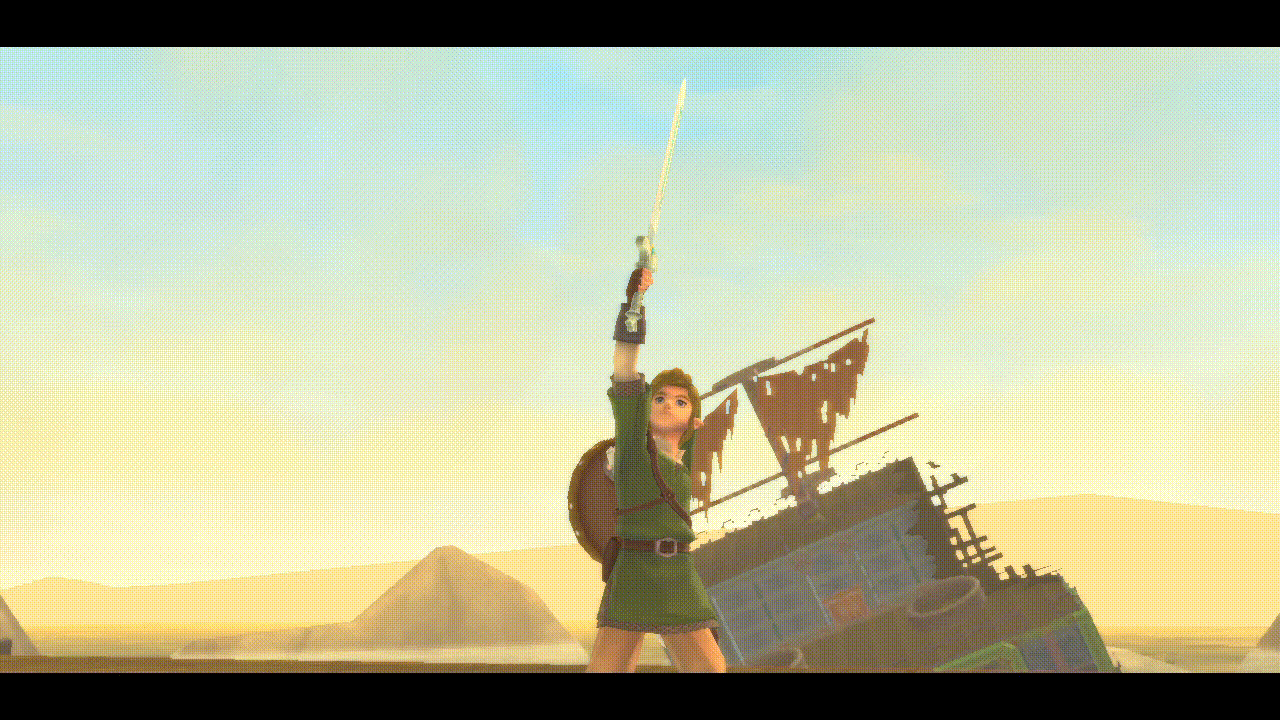
The major feature of Skyward Sword HD compared to the original is the addition of button controls, which can be swapped out from the usual motion control scheme at any time. This is critical for increasing the title’s potential audience, allowing players with a Switch Lite to enjoy the title, but also providing an option for players who can’t or don’t want to swing their arms around. While the motion controls themselves are much improved thanks to better gyro technology in the Joy Cons than the Wii Remote Plus (flashbacks of placing the controller on a table to recalibrate the gyro every ten minutes), the button controls are a pretty decent replacement once you get used to them. Flicking the right control stick acts as a good stand-in for slashing the sword in various directions, while spin attacks and killing blows (which require quick tweaks of the stick) take a little bit of practice.
Holding L lets you move the camera freely, and clicking the left control stick replaces shaking the left Joy Con. The button controls work fine enough for combat, but when it comes to traversing the world, they’re such a welcome addition: no longer do you need to contort your wrist into awkward positions to swim downwards or waggle your arm up and down to make your Loftwing fly higher. You can even toggle smaller amounts of motion support, such as gyro aiming for more precision with the bow and slingshot. I found myself swapping quite comfortably between both control schemes regularly, with roughly half of my total play time in each mode.
Visually, the soft watercolour inspired style that worked incredibly effectively within the original release’s limitations (the Wii could only output in standard definition) is now rendered in HD, and is as colourful and expressive as a Nintendo game can be. Variation within the environments provide a muted canvas-like quality to the simple textures, with shifts in lighting, particle effects, and colour palette helping differentiate between the different biomes – while Eldin Volcano and Faron Woods have a completely different aesthetic, the unified visual tone makes them feel part of the same world. The character and enemy models are more akin to the cartoonish Wind Waker than the gritty, rather ghoulish cast of Twilight Princess, lending to expressive faces and fantastical monsters. Everything runs at a smooth 60 FPS too.
Dungeons & Loftwings
One of Skyward Sword’s strengths is in its swathe of clever environmental puzzles, which it extends throughout the three Surface areas: Faron Woods, Eldin Volcano, and Lanayru Desert. Each area must be traversed like an outdoor dungeon – there are enemies, hazards in the landscape, and puzzles to be solved all over the place. As the story progresses, these largely linear biomes expand and change, as does your arsenal of equipment and abilities. This helps prevent return visits from getting repetitive, which is fortunate since you’ll be revisiting these areas constantly throughout the game. It also helps more formal dungeons, such as Skyview Temple and Lanayru Mining Facility, feel like extensions of the world rather than discrete spaces. They may be comparatively small and few when placed against those in Twilight Princess, but their continuation of the puzzle motifs from the Surface areas lend them an authenticity not commonly seen in other titles.
The dungeons of Skyward Sword also provide a visual variety and creative use of three-dimensional space unique to the game, leading to some ingeniously memorable puzzles and some of the most iconic spaces in the series. The multi-levelled central statue of the Ancient Cistern and the time-bending Sandship remain two of my favourite dungeons, featuring some of the most satisfying combat encounters in gaming: the Koloktos boss fight (in which you lasso away a giant automaton’s weapon and use it to hack it to death) and an epic duel with a robotic, skeletal pirate captain. Encounters like these are where motion controls really come into their own, with the former providing a tactile power fantasy and the latter a tense, physically exhilarating stand-off.
It’s also worth noting the array of items present in Skyward Sword, and how they affect your interactions with its world. The usual Zelda staples of the bow, bombs, and slingshot are present, as are the more unique Beetle (a controllable drone that can pick up items) and Gust Bellows (a big reverse vacuum cleaner). Throughout the overworld and dungeons, each item is called on explicitly for specific puzzles – however, they can also be used in combat, leading to scenarios where you’ll be managing your resources and pre-planning encounters akin to Breath of the Wild. Bombs in particular can be used to take out numerous enemies quickly, and it’s incredibly satisfying to switch through your arsenal on the fly to take out groups of baddies.
You’ll mostly be exploring the Surface with a particular goal in mind, which means you’ll be Dowsing (tracking your goal with a sensor on your sword) from one location to the next. However, there are numerous collectables to look out for that feed into the game’s rudimentary crafting and upgrade system (which would go on to form the basis of these systems in Breath of the Wild). Collecting particular amounts of bugs, ore, or treasure lets you upgrade your items or create new potions back at the Skyloft Bazaar. Upgrading the Beetle gives it more speed and stamina, while the Slingshot fires more seeds at once after an upgrade. It’s a neat little incentive to hunt for materials, which you can eventually Dowse for as well.
There are also Goddess Cubes scattered throughout the Surface, which when struck with your sword unlock treasure chests you can find in the Sky. These… aren’t very fun collectables. You’ll usually have to solve an environmental puzzle to reach one (such as timing a jump correctly or inspecting the map closely) and occasionally another to reach the unlocked chest back above the clouds. It’s an extra layer of busywork that seems as though it was included just to give you something to do in the Sky, which is otherwise mostly empty. This is indicative of a larger issue in Skyward Sword to do with padding – multiple times throughout your adventure, you’ll reach your goal only to be tasked with fetching yet another MacGuffin before you get your reward.
It’s not the extended tasks themselves that are frustrating, it’s that the lack of interesting framing makes them feel like chores rather than adventures. For example, to reach the entrance to the Fire Sanctuary, you need to climb to the hottest depths of Eldin Volcano and pour water onto some statues to clear flames blocking your way. However, the nearest water source is two loading screens back – you dash back and get some water, only to be confronted by a second statue. Another four loading screens later and when you finally arrive at the Fire Sanctuary, you find a very large obstacle that requires travelling to a different area of the Surface (ie. find a bird statue, enter the Sky, fly to that Surface area) and then escorting a fragile robot all the way up to the volcano’s summit again without them being shot by Bokoblins. In isolation, an escort mission with a sassy robot sounds great – in context, it feels like a total drag. It’s indicative of Skyward Sword’s failure to frame its fun gameplay experiences properly, and no amount of “quality of life” upgrades are able to fix that.

Repetition is another oft-cited critique of Skyward Sword, and while improvements in text speed help this somewhat, the core critiques still stand. Much of my frustration comes from repeated trips to the Sky, the weakest element of the title’s otherwise engaging world. Rather than implementing a fast travel system between bird statues, you’ll need to return to the Sky whenever you want to go anywhere – this means you’ll spend a not-insignificant amount of time repeating the same slow, tedious journeys across a largely colourless expanse devoid of any interesting content. Button controls make these short trips less frustrating to mindlessly plough through, but they still feel incredibly unnecessary and serve only to kill momentum. Other repetitive elements include pointless story-based slogs (such as returning to the Isle of Songs multiple times) and the infamous boss fights with big baddie The Imprisoned, which remain as poorly paced and frustrating as they were in 2011.
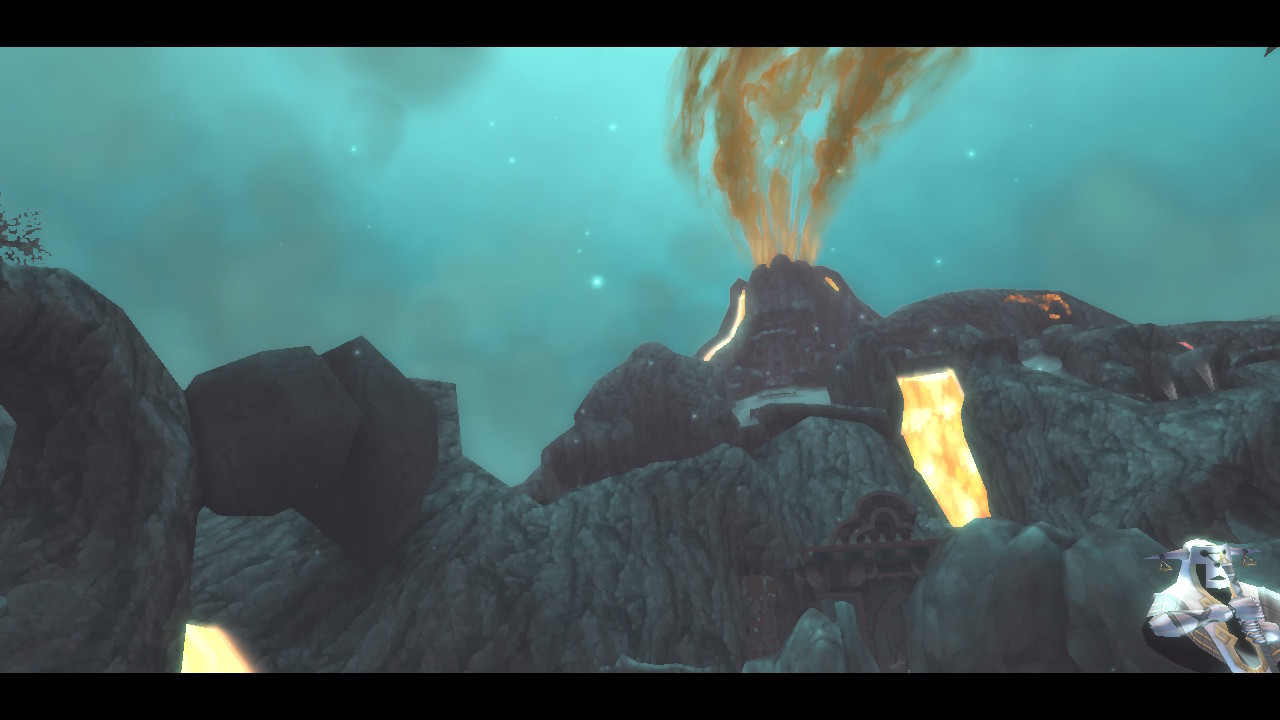
However, repetition is not always a detraction. Skyward Sword’s eerie Silent Realm challenges remix the various landscapes into a stealth puzzle, using each location’s unique environmental aspects to provide an arena for collecting Sacred Tears. These segments prevent you from using any items, and launch nightmarish Guardians to hunt you down: a single hit from one will cause you to fail the challenge, sending you back to the start. Collecting a Tear makes the Guardians go to sleep for ninety seconds, leading to frantic dashes and unbelievably sweaty Joy Cons. There are other hazards as well, such as Watchers that awaken Guardians when they spot you, or treacherous Waking Water (which occasionally pools out of nowhere to spring you). When I originally bought Skyward Sword on Wii, I was so terrified of the Silent Realms that I quit playing for six months – they remain a suspense-filled, terrifying roadblock and a fantastic way to mix up traditional Zelda gameplay.
The game supports amiibo functionality with the “Zelda & Loftwing” figurine, which lets you teleport to the Sky from anywhere on the Surface. I can’t really think of any areas where this would be super useful, since there are plenty of Bird Statues in-game with the same function, but that’s an option if you’re lucky enough to find one.
For a newcomer to the Zelda franchise who may have only played Breath of the Wild, Skyward Sword HD is an excellent way to experience quite a different style of gameplay with more of a linear, puzzle-solving focus. Fans of the series who haven’t played the original title will find plenty of fun to be had here despite the game’s quirks. At full price, there’s not enough new content here to justify a re-purchase if you’ve played through the original recently, however, the lure of portability, button control options, slight quality of life upgrades, and HD visuals may be enticing enough for some.
8
Great
Positive:
- Fantastic and varied puzzle design throughout overworld and dungeons
- Unique, strategic combat requiring planning and precision
- Quirky, memorable main characters and villains
- Quality of life upgrades make the game more accessible
Negative:
- Relentless padding and repetition harm the game’s pacing
- Narrative isn’t nearly strong enough to be such a major focus
- Lack of extra content for a ten-year-old game at full price hurts
A faithful remake of the most polarising 3D Zelda title, Skyward Sword HD provides numerous quality of life improvements that help polish some of the original’s roughest edges. Its issues with pacing, repetitive gameplay elements, and a lacklustre narrative remain moderate detractions from what is an otherwise legendary Zelda experience, filled to the brim with the charisma, creativity, and satisfying dungeoneering the series is famous for. While it doesn’t bring any new content to the table, the addition of button controls and portability (courtesy of the Switch) means there’s never been a better way for newcomers and diehard fans to experience the strategic combat and innovative puzzle-solving of this lofty adventure.
